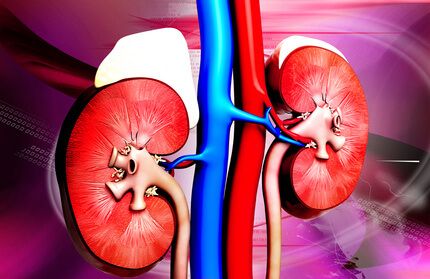Courtesy of Dr. Carlos Fava.
The incidence of kidney disease is increasing. In its final stage, this pathology is related with coronary disease and increased mortality. Furthermore, we know that, in many occasions, it is associated with diabetes.
 Nowadays, the evidence comparing the progress of patients with impaired kidney function who have undergone left main coronary angioplasty and those who have undergone myocardial revascularization surgery is insufficient.
Nowadays, the evidence comparing the progress of patients with impaired kidney function who have undergone left main coronary angioplasty and those who have undergone myocardial revascularization surgery is insufficient.
This is a substudy within the SYNTAX trial that analyzed kidney function as measured by glomerular filtration rate estimates (eGFR). Stage 1 was defined as eGFR ≥90 mL/min per 1.73 m2 (normal renal function [NRF]); stage 2, impaired renal function (IRF), with an eGFR between 60 and 89 mL/min per 1.73 m2; and stages 3 to 5, chronic kidney disease (CKD): stage 3 as eGFR 30-59 mL/min per 1.73 m2, stage 4 as eGFR 15-29 mL/min per 1.73 m2, and stage 5 as chronic dialysis treatment.
Read also: EuroPCR 2018 | RADIANCE-HTN SOLO: Renal Denervation Guided Through Intravascular Ultrasound.
Among 1638 randomized patients, 25.7% of those who underwent angioplasty and 26.6% of those who underwent surgery had normal kidney function. Impaired renal function (stage 2) accounted for 55.8% of patients in the angioplasty group vs. 54.2% of patients in the surgery group. Finally, chronic kidney disease was experienced by 18.5% of patients in the angioplasty group vs. 19.2% in the surgery group (stage 3: 89.9% vs. 90.2%; stage 4: 8.2% vs. 7.3%; stage 5: 1.9% vs. 2%).
Patients with CKD had a higher EuroSCORE compared with patients with NRF and IRF, and a higher SYNTAX score (32.2 ± 12.1 vs. 28.2 ± 11.7; p = 0.008).
Off-pump surgery was more frequent among patients with CKD (22.1% vs. 13.1% vs. 15.8%, respectively; p = 0.035), and the use of multiple arterial grafts was lower among this group. No differences were observed regarding the number of anastomoses and the completeness of revascularisation.
Read also: EuroPCR 2018 | SPYRAL HTN-ON MED: Renal Denervation Comes Back to Life.
There was no difference regarding the number of stents among patients who underwent angioplasty. However, the rate of complete revascularisation was lower in patients with CKD (46.2% vs 60.5%, vs. 56.5%, respectively; p = 0.007).
Aspirin was prescribed less often in patients with CKD; no differences were observed regarding statins and beta-blockers.
The incidence of major adverse cardiac or cerebrovascular events (MACCE) at 30 days was similar. No differences were observed in relation with kidney function.
Read also: Contrast Induced Kidney Injury, Infamous Problem with No Magical Solutions.
At 5 years, the rate of MACCE was higher among patients with CKD in the global population, being higher after angioplasty compared with surgery (42.1% vs. 31.5%; p = 0.019). The need for repeat revascularization was lower among patients with NRF.
In patients with CKD who also had diabetes, those who underwent surgery had better outcomes that patients in the angioplasty group in terms of the composite death/stroke/infarction, as well as all-cause death.
Conclusion
During a 5-year follow-up, event rates were comparable between angioplasty and surgery patients with IRF, but higher in patients with CKD compared to patients with NRF. The long-term negative impact of CKD in patients who undergo angioplasty is higher when compared with those who undergo surgery, particularly among patients with diabetes and extensive coronary disease.
Courtesy of Dr. Carlos Fava.
Original title: The Impact of Chronic Kidney Disease on Outcomes Following Percutaneous Coronary Intervention Versus Coronary Artery Bypass Grafting in Patients with Complex Coronary Artery Disease: Five-Year Follow-Up of the SYNTAX Trial.
Reference: Milan Milojevic et al. EuroIntervention 2018;14:102-111.
Get the latest scientific articles on interventional cardiologySubscribe to our weekly newsletter
We are interested in your opinion. Please, leave your comments, thoughts, questions, etc., below. They will be most welcome.





